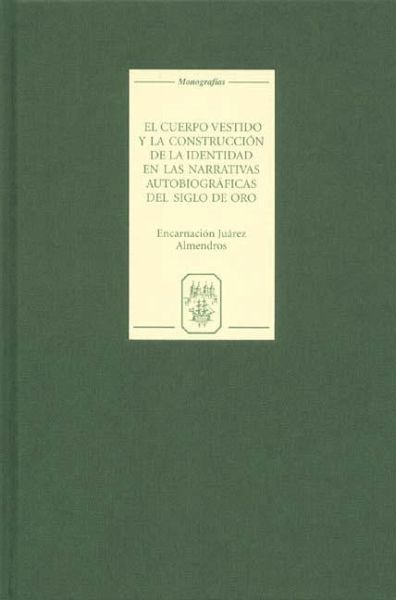
El Cuerpo Vestido y la Construccion de la Identidad en las Narrativas Autobiograficas del Siglo de Oro
Versandkostenfrei!
Versandfertig in 1-2 Wochen
99,99 €
inkl. MwSt.

PAYBACK Punkte
50 °P sammeln!
This book examines the significant role of clothing and other corporeal decorations in the construction of identity in nine fictional and historical Golden Age autobiographies: Lazarillo de Tormes, Guzmán de Alfarache, Guitón Onofre, El Buscón, La pícara Justina, Vida del soldado español Miguel de Castro, Discurso de mi vidaI> by Alonso Contreras, Vida i sucesos de la Monja Alférez by Catalina de Erauso and Comentarios del desengañado by Duque de Estrada. Attire in these works projects a complex external vision of the personality, which substitutes the characteristic lack of introspecti...
This book examines the significant role of clothing and other corporeal decorations in the construction of identity in nine fictional and historical Golden Age autobiographies: Lazarillo de Tormes, Guzmán de Alfarache, Guitón Onofre, El Buscón, La pícara Justina, Vida del soldado español Miguel de Castro, Discurso de mi vidaI> by Alonso Contreras, Vida i sucesos de la Monja Alférez by Catalina de Erauso and Comentarios del desengañado by Duque de Estrada. Attire in these works projects a complex external vision of the personality, which substitutes the characteristic lack of introspection and description of the body in these accounts. This study considers the verbal representation of clothing as a site where the divided subject in search of a fictitious unity and individual distinction and the subject conformed by structures and discourses converge dialectically. This analysis takes into account the philological, economical, political, moral and artistic meaning of costume in this period but follows different methodologies, such as the theories of Bakhtin, Mulvey, Freud, Lacan and Kristeva, to explain the particular subjectivity of each Life




